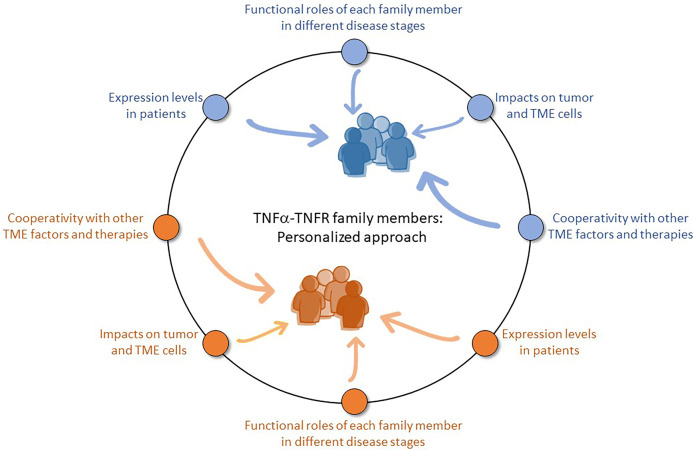Figure 1.
Targeting members of the TNFα-TNFR family in cancer: The personalized road. The TNFα-TNFR network brings together complex interactions between the soluble and membrane forms of TNFα, as well as TNFR1 and TNFR2 with their diverse binding preferences to each of the TNFα forms, complex signaling cascades and soluble variants. This intricate system of ligands and receptors can lead to different consequences in various malignancies, raising the need to carefully identify specific players in each and every disease type, and possibly also in patients who were diagnosed with the same type of cancer. Thus, a personalized approach should be designed in order to establish the most appropriate and efficient therapeutic mode in cancer, vis-à-vis the use of modifiers of TNFα and its receptors. For example, the properties of one malignant disease (“Blue patients” in the Figure) in terms of TNFα-TNFR family members may considerably differ from the characteristics of another cancer type (“Orange patients”). To precisely identify who can benefit from treatments directed to any of the family members, it is necessary to determine the expression patterns of each partner in each patient; then, based on analyses of each malignancy and its subtypes, it is necessary to determine their roles in different disease stages, their impacts on different cell types in the tumor (cancer cells, endothelial cells, leukocytes, stromal cells), as well as their interactions with other TME factors and potential efficacy when combined with other cancer therapies. The information obtained by research of the different aspects and elements stands in the basis of a personalized approach that will target members of the TNFα-TNFR family or exploit them (e.g., by increasing the proportions/activities of beneficial TNFR2+ CD8+ TILs) that would reach an outmost efficacy in cancer therapy.

